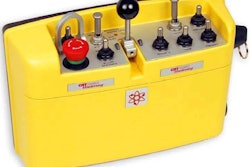
Most sourcing professionals that I work with are seeing eSourcing for the first time—a surprising fact alone as more and more businesses executives are turning to mobile, online and cloud-based solutions for maximum supply chain efficiency. And while most people think that “long and detailed” equals “thorough and comprehensive,” the reality is that to do eSourcing efficiently requires a different way to look at things.
We are required to gather bid requirements and deliver them in some usable format. If we do it right, we have suppliers chomping at the bit to submit their responses. If we do it wrong, not all suppliers participate. Each time a supplier chooses not to submit a bid, we have just lost a possible opportunity to save our company money. As a buyer, I want everyone to submit a bid and don’t want to be the cause that they chose not to.
When we deliver clear, concise requests for proposals (RFPs), the responses tend to be more thorough with a larger number of suppliers submitting proposals.
At a recent healthcare conference, I polled a few healthcare suppliers about what they are seeing in the form of RFPs. Overwhelming, they told me that RFPs are much too long, ask questions that really are not important and as a result, require extensive amounts of not only their time but of other departments within the organization. Yet, what we must not forget is that suppliers are responding to RFPs from multiple industries and groups.
To become successful for your next RFP, apply these best practices as they relate to your supply chain.
1). Think Small and Focused—When I first started sourcing years ago, I was guilty of following the status quo and would typically send out huge RFPs consisting of lots of information that required a significant effort by the suppliers. What I learned is that size really does matter—especially so with RFPs. The shorter and more clearly focused the RFPs were, the better the responses from suppliers were received. In addition, there were fewer and fewer suppliers opting out of the bid process. Here are some steps I take to maximize on this approach:
- Start with a maximum of five to seven categories of questions (such as product, customer service, warranty, pricing, etc.)
- Rank the categories
- Rank the questions within each category
- Weight the categories
- Weight the questions within each category
- Review the categories and eliminate as many of them as necessary
- Review the questions within the categories and eliminate the questions of lesser importance
- Re-weigh the categories and questions within each of them
This simple process I utilize today has proven to deliver some outstanding results. Size does matter—and smaller and focused is often better.
2). Create Separation—What is the basic reason for asking questions to suppliers in the first place? To create supplier separation. Our main task is to create a smaller supplier list versus having every supplier who submits a bid in the shortlist. When done effectively, you will save a significant amount of time and effort to close out the deal.
Ask questions that mean something to the actual value of the contract. If you need to know the supplier’s primary and secondary contacts at the corporate office, what their Website URL is, or even the address at the corporate office, ask it when they are awarded.
The more questions there are in an RFP, the less supplier separation is created. This means a larger shortlist with a substantial amount of additional work needed to negotiate. The goal is to bring in the best of the best to the shortlist round and ask only questions that are important to the overall value.
3). Include Key Terms and Conditions—We need to score how each supplier will respond to the key terms you will be negotiating. While it may not be their final response, it certainly tells you where they stand and how much effort is going to be needed to reach agreement. Whether you are in healthcare or any other industry, having key terms and conditions in the RFP helps with the negotiation of the contract and typically deliver responses that are closer to what you are looking for.
4). Give Suppliers the Correct Answer—We should actually tell the supplier what the correct answer should be. This doesn’t apply to all questions because that would be seen as leading the suppliers. Where I typically apply this logic is for the key terms and conditions section of the RFP. I want the suppliers to know what I want. This saves time in the negotiations and helps identify the best of the best suppliers.
5). Explain the Questions—The best practice is to always explain the questions as well as certain answers on occasions. This will help drive better supplier responses and eliminate the need for clarifications down the road. This also clarifies exactly what you are looking for and eliminates the need to answer questions on this topic during the RFP process.
6). Mix Question Types—It is quite common to see the “old school” RFPs containing the single type of question/response combination, “Yes/No, Please Explain.” This type of question ends up becoming very subjective and at times hard to score during the evaluation phase.
Instead, a nice mix of autoscored and judged questions is critical to the success of the RFP process. It’s also beneficial to mix in the types of autoscored questions. Mix in “Yes/No” (for mandatory qualifiers), “Multiple Choice/Single Answer,” “Multiple Choice/Multiple Answer” and “Numeric” questions.
Not only does mixing in different question types deliver variety, it also proves to deliver better supplier responses that can eliminate the amount of time judging each response.
7). One Question Per Question—Asking one question per question sounds quite simple but is not as easy to practice. Often clients will offer a question that asks so many sub questions that suppliers get confused and do not answer properly. Only answer the question(s) that make them look the best.
8). Use Question Libraries—Question libraries offer some of the best ways to deliver efficiency, consistency and overall best practice. It takes time to build a full library but from day one, you should be adding to the list.
Review each of the RFPs as they go out. When you see questions that are best practice, add them to the library and group them with like questions. Best practice your questions before sending out the RFP. Then import or add the questions to the appropriate buckets.
Achieve expected results
Using these simple best practices can net you significant amounts of efficiency, time savings and overall consistency as it relates to your RFPs. While some of this may actually require a decent amount of work on the front end, the overall effort will be worth it—I guarantee it.


















